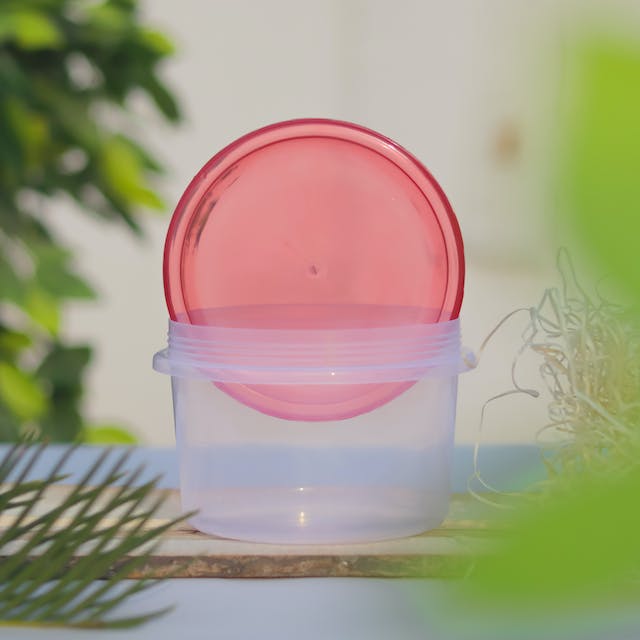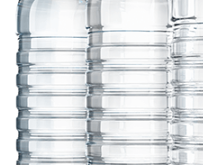It seems plastic is everywhere, just look around your house.
Plastics contain a group of chemicals called Phthalates, they make plastic more flexible and durable.
From cosmetics to plastics, phthalates serve various purposes, but they raise concerns about potential health risks.
Understanding Phthalates

Phthalates are esters of phthalic acid, commonly used as plasticizers to enhance the flexibility, durability, and transparency of plastics.
They are also found in personal care products, fragrances, food packaging, and household items.
They leach into liquids or food upon contact. Microwaving in Tupperware is a bad idea.
Phthalates are not chemically bound to the products; this makes them prone to leaching into the environment and the human body through various routes of exposure.
Health Risks Associated with Phthalates
Phthalates have been linked with a ton of health problems including infertility, testicular dysgenesis, obesity, asthma, and allergies.
Phthalates have been shown to interfere with hormonal balance, leading to adverse effects on reproductive health, such as reduced sperm quality, early puberty in girls, and reproductive organ abnormalities in both genders.
Prenatal exposure to phthalates has been associated with neurodevelopmental disorders and cognitive impairments in children.
Studies have also raised concerns about the carcinogenic potential of certain phthalates, particularly diethylhexyl phthalate (DEHP), which is classified as a possible human carcinogen by the International Agency for Research on Cancer (IARC).
Individuals with sensitivities may experience allergic reactions and skin irritations upon exposure to phthalate-containing products.
Research has shown phthalates are involved with:
- Endocrine disruption: Phthalates can interfere with the body’s endocrine system, affecting hormone production and regulation.
- Reproductive issues: Exposure to phthalates has been linked to reproductive problems, including reduced sperm quality, infertility, and developmental abnormalities in the male reproductive system.
- Developmental and reproductive toxicity: Some phthalates have been classified as reproductive toxins, meaning they can cause adverse effects on the development of embryos or fetuses.
- Respiratory issues: Phthalates may exacerbate respiratory conditions such as asthma and allergic reactions.
- Neurotoxicity: There is evidence suggesting that phthalates may have neurotoxic effects, potentially impacting brain development and function.
- Cancer risk: Some studies have suggested a potential link between phthalate exposure and certain types of cancer, including breast cancer and testicular cancer.
- Immune system effects: Phthalates affect the immune system, potentially increasing the risk of allergic reactions and autoimmune disorders.
- Liver and kidney damage: High levels of phthalate exposure have been associated with liver and kidney damage in animal studies.
- Obesity and metabolic disorders: Some research suggests that phthalate exposure is linked to an increased risk of obesity and metabolic disorders.

Regulation and Monitoring
The EPA and ECHA have established guidelines and restrictions in certain products, but they still exist in more.
Identifying Phthalates in Products
Here are some phthalate compound names that will be on labels:
- diethyl phthalate (DEP)
- dibutyl phthalate (DBP)
- DEHP
Phthalates are often found in cosmetics, fragrances, vinyl flooring, plastic toys, and food packaging.
Try to find phthalate-free alternatives and supporting brands committed to safer practices can help reduce exposure.
Minimizing Exposure to Phthalates
- Use Glass
- Use Stainless-Steel Containers instead of Plastic
- Choosing Fragrance-Free personal care product
- Avoiding PVC-containing items.
- Prioritize phthalate-free products for infants and young children, as they are particularly vulnerable to the adverse effects of these chemicals.
Phthalates are everywhere, you can’t avoid them but minimizing them will be helpful.
Do your best to NOT drink from plastic water bottles or cook, store, and eat from plastic containers. Heating food in plastic containers not a good idea.
Use glass or stainless steel.
Here’s a list of products that often contain elevated levels of phthalates:
1 – Personal Care Products: Fragrances, lotions, deodorants, shampoos, and nail polishes frequently contain phthalates to enhance scent and texture.
2 – Vinyl Flooring and Wall Coverings: Phthalates are commonly used as plasticizers in vinyl flooring and wall coverings to improve flexibility and durability.
3 – Plastic Toys and Children’s Products: Many plastic toys, teethers, bath books, and other children’s products may contain phthalates, particularly those made from soft PVC (polyvinyl chloride).
4 – Food Packaging: Phthalates can leach from plastic food packaging materials, such as plastic wrap, food containers, and plastic bottles, into the packaged food or beverages.
5 – PVC Pipes and Tubing: Phthalates are often added to polyvinyl chloride (PVC) pipes and tubing used in plumbing, irrigation systems, and medical devices to increase flexibility and resilience.
6 – Cosmetics and Personal Care Tools: Phthalates may be present in various cosmetic and personal care tools, including makeup brushes, sponges, and hairbrushes, as well as in some formulations of lipstick and mascara.
7 – Household Cleaners and Air Fresheners: Certain household cleaners, air fresheners, and scented candles may contain phthalates to improve fragrance and consistency.
8 – Medical Devices: Phthalates are commonly used in medical devices such as intravenous tubing, blood bags, and catheters to increase flexibility and durability.
9 – Flexible Plastic Packaging: Phthalates are often added to flexible plastic packaging materials, including plastic bags, shrink wrap, and cling film, to improve their flexibility and seal ability.
10 – Personal Protective Equipment (PPE): Some types of personal protective equipment, such as gloves and aprons made from PVC or other plastics, may contain phthalates.
 Growing Younger Everyday What Works For Me
Growing Younger Everyday What Works For Me





